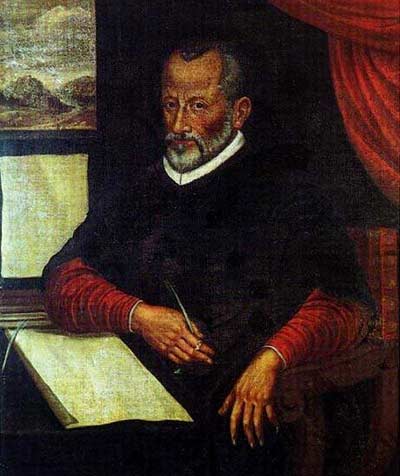Palestrina, Giovanni Pierluigi da (c. 1525–1594)

Palestrina's name has become synonymous with textbook perfection in the field of harmony and counterpoint, and his reputation long outlived him. He began his career in Rome as organist and choir-master.
In 1552, under the patronage of his former bishop, now Pope Julius III, Palestrina became choir-master at the Julian Chapel, the training school for the Sistine Choir. After three years he was dismissed by a new pope because he was married, but in the same year he succeeded Lassus as choir-master of the church of St John Lateran. He resigned after a dispute over money matters in 1560, and returned to S. Maria Maggiore, but during the last two decades of his life he worked once more at the Julian Chapel.
In the 1570s Palestrina lost his brother, two of his sons, and finally his wife in plague epidemics, which led him to consider entering the priesthood. However, in 1581, just eight months after his first wife's death, he married a wealthy widow, who assured his financial security.
Masses and motets
Palestrina worked against the background of the Counter-Reformation. The Council of Trent had initiated ecclesiastical reforms, which decreed that sacred music should be kept simple so that the words could be heard clearly. Elaborate polyphony and the extensive use of instrumental accompaniment was discouraged. Palestrina's Masses and motets are all constructed with an ear to clarity of textual declamation: the vocal lines flow freely and the intertwining parts create their own beauty, enhancing rather than obscuring the meaning of the words.
Over 100 of Palestrina's Masses survive, including the famous Missa Papae Marcelli, together with about 375 motets for between four and 12 voices and many other liturgical works, including Magnificat and Lamentation settings. However, as his career demonstrates, he achieved a balance between the sacred and the secular. While much of his music was written to the glory of God, some is based on secular models; and his many published collections include two books of madrigals.


